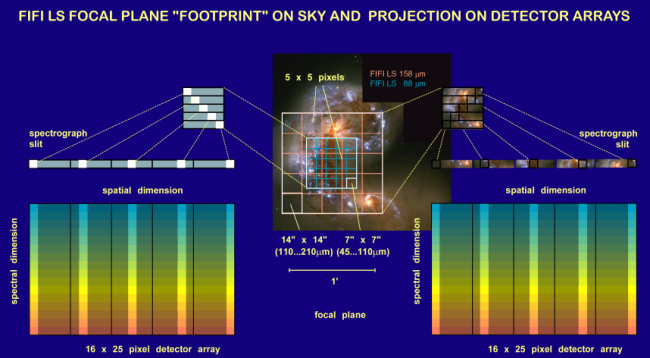| |
The problem is clear: how can one obtain a spectrum
from every single pixel in a 2-Dimensional field simultaneously?
For the first time ever in the far-infrared,
our group is solving this problem by using an
optical slicer.
These three specialty mirrors, in sets of five, slice the
2-D image into 5 rows,
then optically rearrange the 5 rows into a single
1-D row of 25 pixels-- effectively a traditional long slit.
Afterwards, we utilize a Littrow mounted
grating to disperse the light. In the data reduction process,
the entire data cube is then obtained.
In the below image, the blue and red squares show the fields-of-view
on the sky for the short and long wavelength detectors, respectively.
(The long wavelength channel has a bigger field of view.) The pictures
on each side show how the spectrograph splits each wavelength
channel into both spatial and spectral pixels, and projects them onto
the
detector arrays.
|




